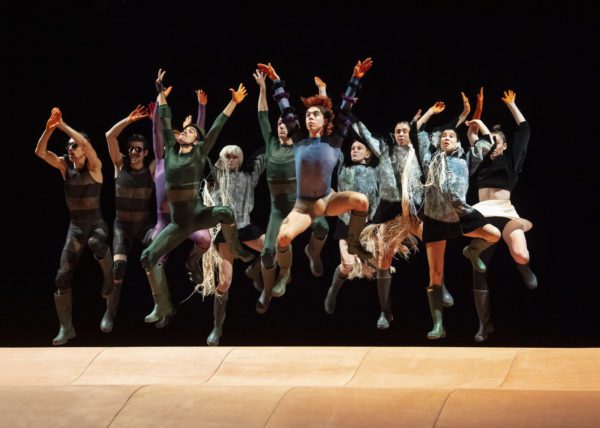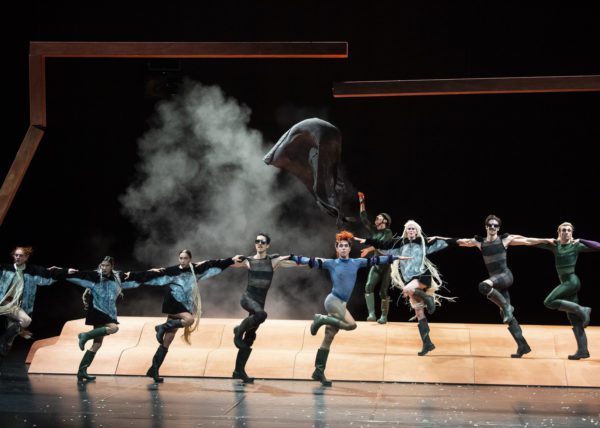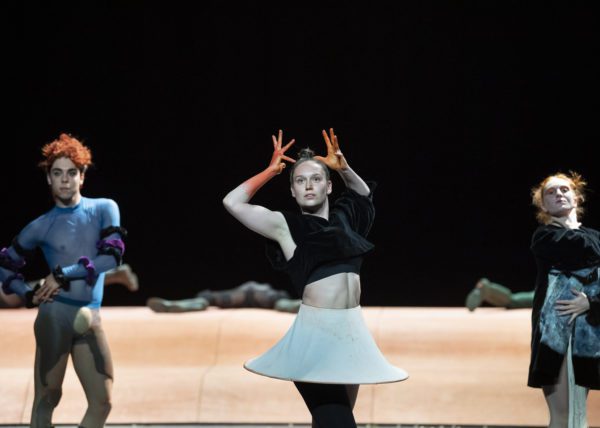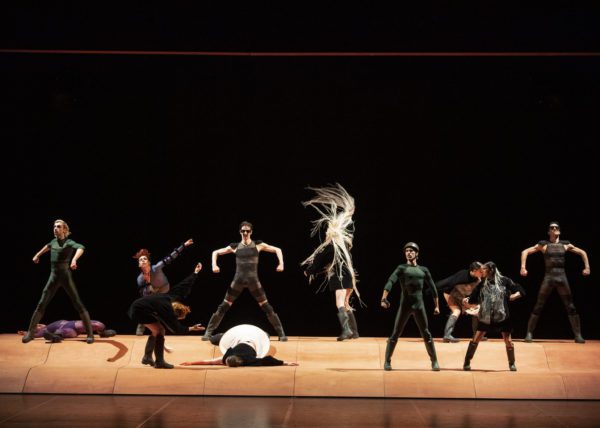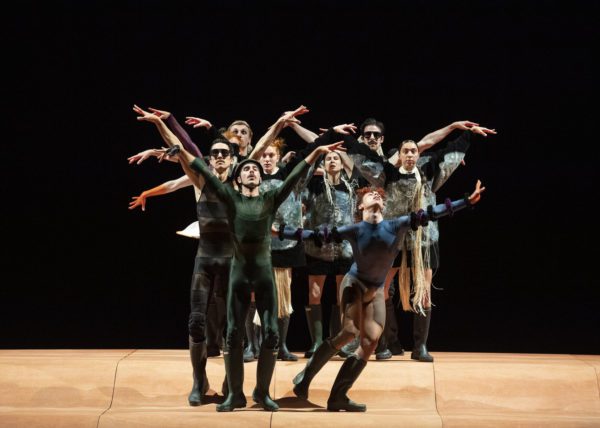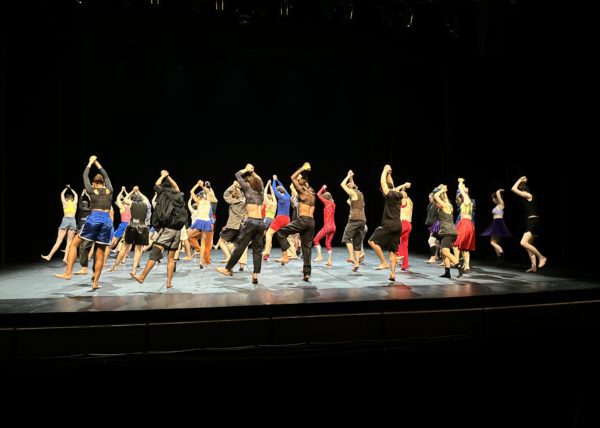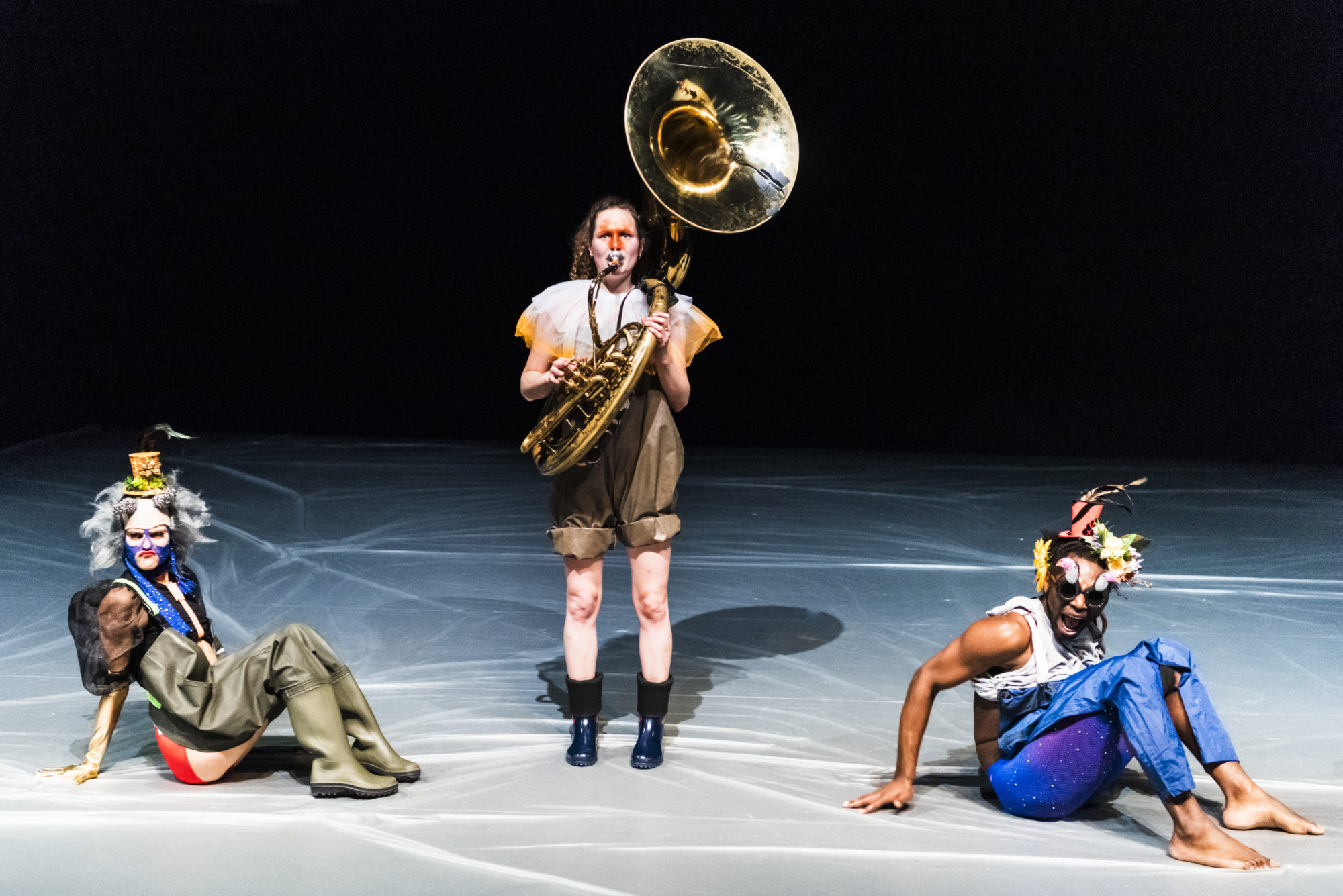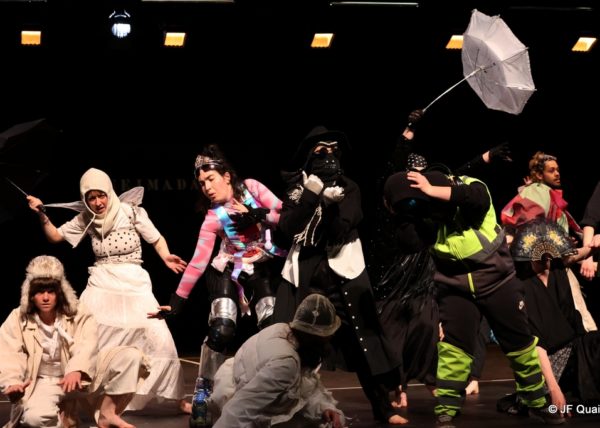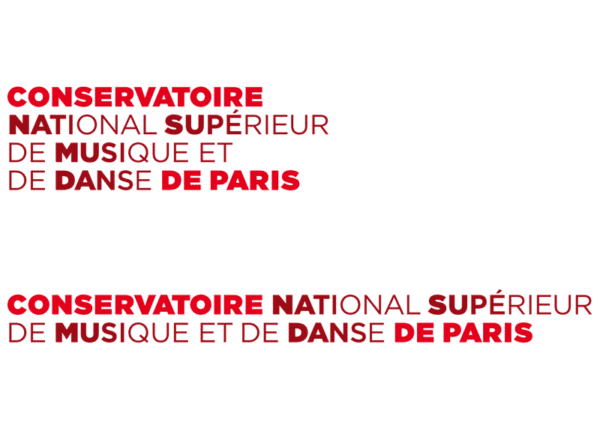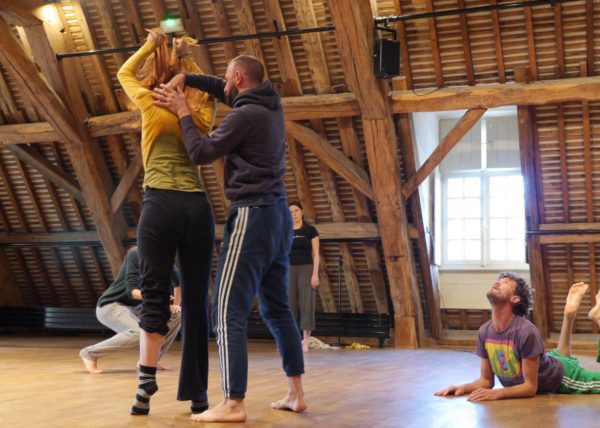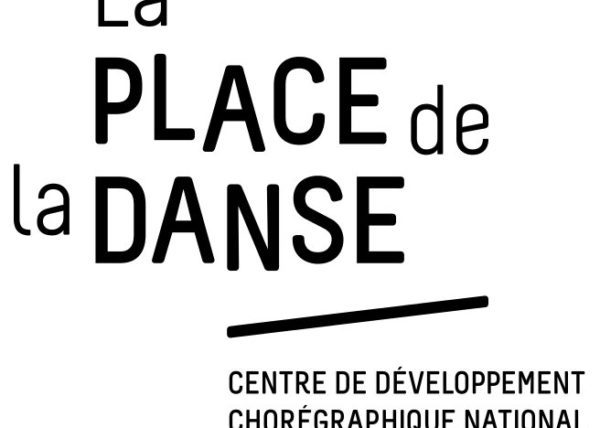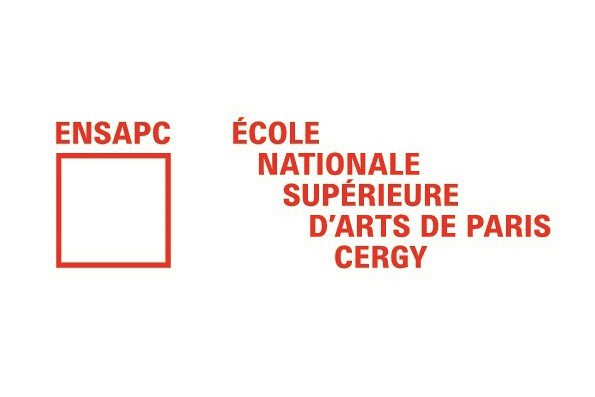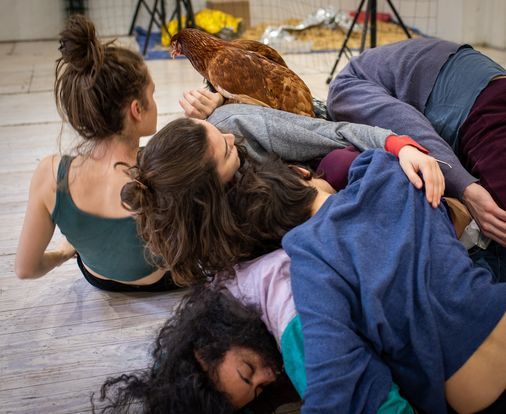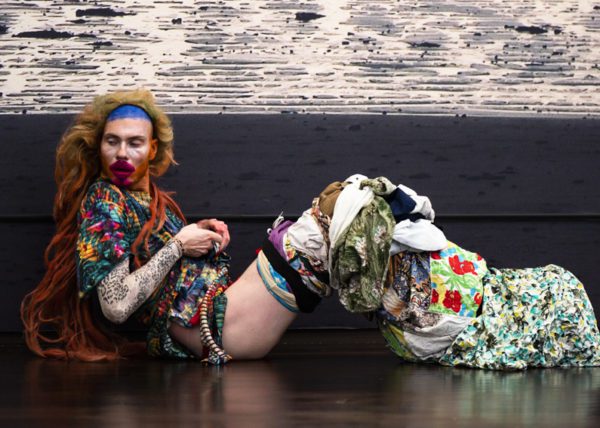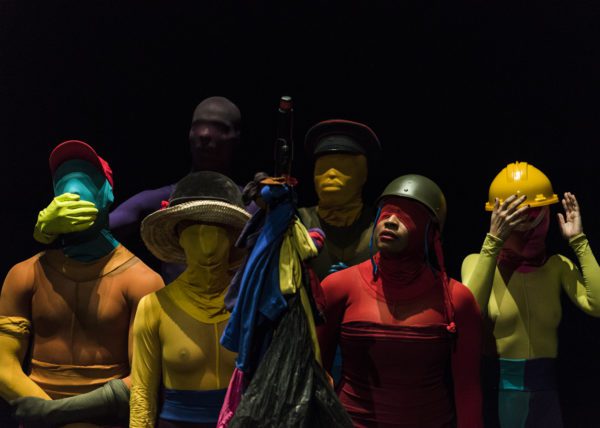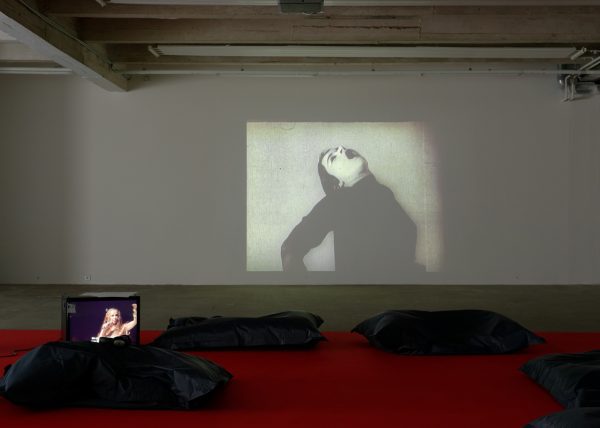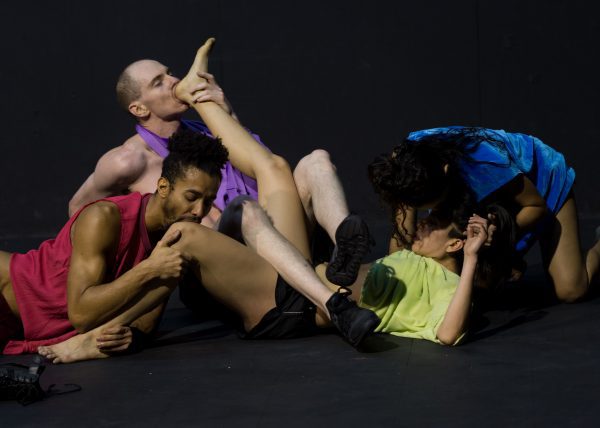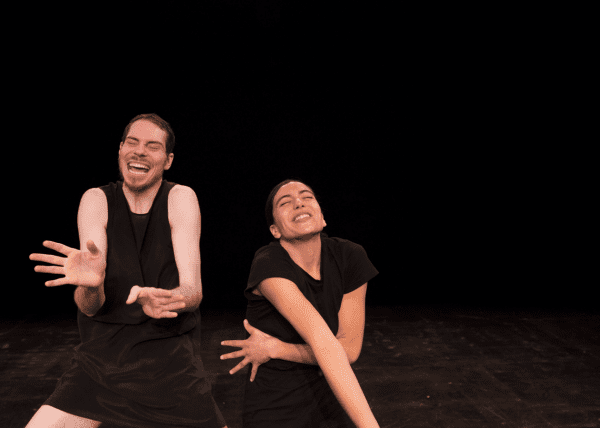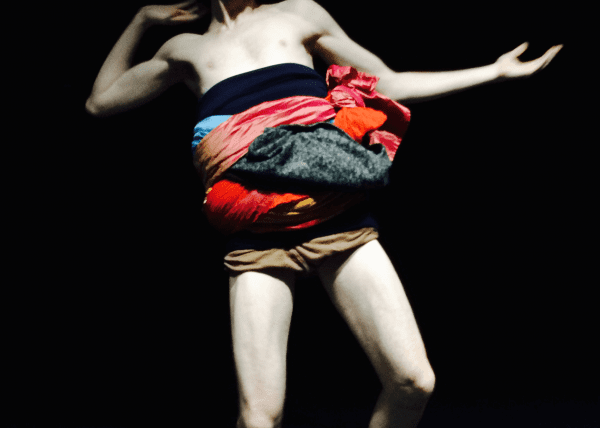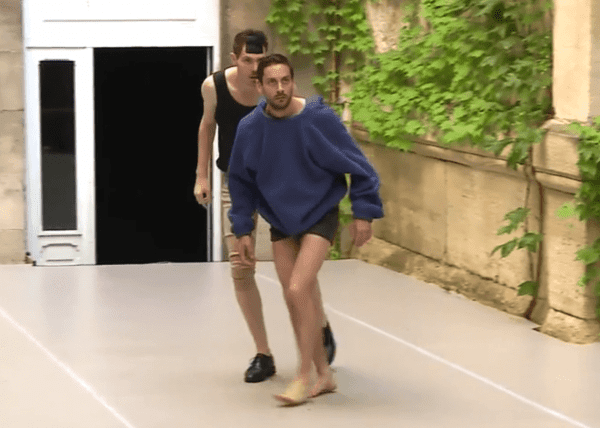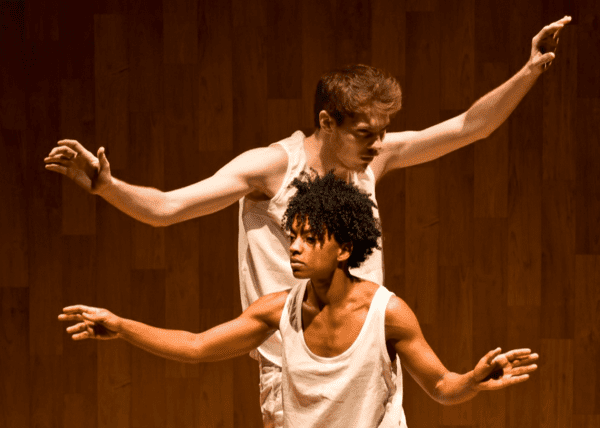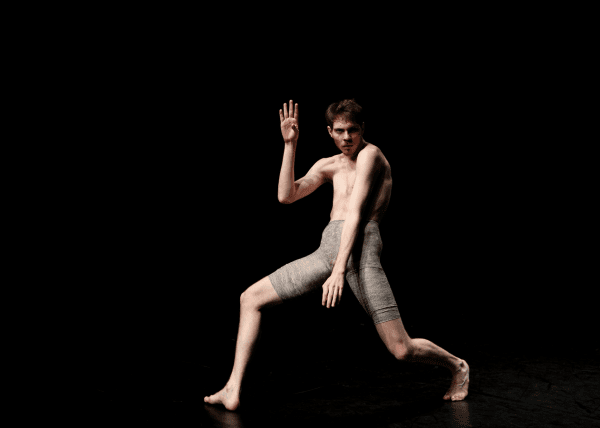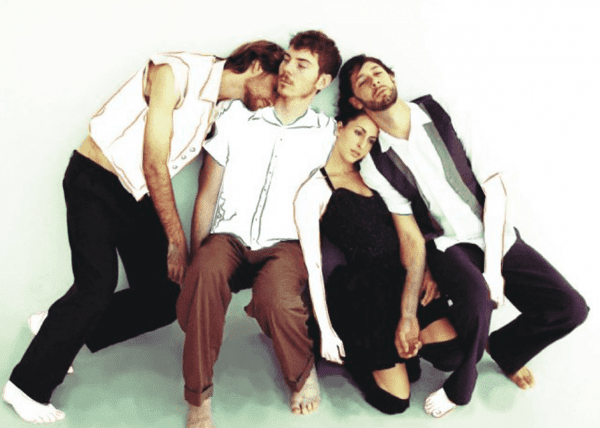-
2022
Erosion
A creation for 12 dancers from the CCN - Ballet de Lorraine in Nancy, for which it is I visit the Ballets Suédois, a private Dadaist troupe installed at the Theaters of the Champs-Elysées between 1920 and 1925.
Piece for 12 dancers of the Ballet de Lorraine based on L'homme et son désir, a piece by Les Balles Suédois (1921).
L'homme et son désir was created by Paul Claudel in Rio de Janeiro, more precisely in Petrópolis, in 1917. The Brazilian atmosphere perceived by its creator and shared with Darius Milhaud, who signed the music, sets the tone of this ballet rather envisaged as a plastic drama: "... a turbulence among the inhabitants, a grandiloquence in the landscapes, a disproportion in the design of the bay, an air of creation of the world... ". The argument of L'homme et son désir is thus dreamed in Brazil, from Brazil, from Brazil. It is close to the theme of L'après-midi d'un faune, that of unfulfilled sexual desire. Claudel admits that he was impressed by this ballet and its half-man, half-goat creature interpreted by Nijinsky, to whom the main role of L'homme et son désir was also addressed, and who in the end could not dance it. It is Jean Borlin who will play the central figure in this little drama, which comes from the atmosphere of the Brazilian forest. The forest is not represented, but activated as "tempting forces" - a universe full of memories, desires, dangers - directed towards the sleeping man proposing a scene of wildness. The forest is a sound forest, made of the chaos of instruments. It is in this forest that a man alone, at nightfall, is in the grip of the passion of a dead woman. A plastic dream for Claudel, or an autobiographical pantomime.
There is nothing innocent about my choice to upset such an argument. The forest dreamed by Claudel seems to me to activate the imaginary of a virgin Amazon that goes hand in hand with the invisibilization of the indigenous populations who struggle to enter the story. Acting as a "neutral landscape" to an autobiographical narrative of a man and his desire for two women, Claudel's forest refers to the idea of a nature constructed as passive and powerless. In front of the image of the two women subjected to the desire of a man, this one puts himself in scene as the master of a colonizing situation. The man and his desire is for me a "ballet of negation": he denies the territory to reduce it to the title of a decor, superfluous; he denies the inhabitants of the forest to reduce them to wild creatures without voice. In doing so, it banishes a possible commonality and reenacts the narrative of a narcissistic fable. Against this idea of an earth empty of meaning and habitation, I propose Erosion, with a narrative of a clod of earth taking its revenge, erupting, shaking the floor and unraveling the viril and dominant eros.
Proposing Erosion one hundred years after L'homme et son désir is a way of evoking the ecocide that has been going on for centuries in Brazil and that has just been reinforced by a deliberate policy of the extreme right. This ballet of the forgotten forest is now contrasted by a forest in erosion which comes to devastate the politics of an Eros without collective power. With Erosion, I wish to question this oblivion as well as this report of extraction as much centered on the natural resources as human. What I wish to put in erosion is not the earth, but rather the operations of annihilation of possible worlds, the negations of forms of life, of common territories and of bodies in struggle.
Among other aesthetic elements of the Swedish Ballet's piece, I would pay particular attention to the juxtaposition of disparate realities that stage an ambiguous world; the simultaneity of actions working towards a polyphony that mixes dance, theater, music, and visual arts; and the style of an eulogy to madness, to the night, and to the ghostly aspect of human existence. Everyday life, dreams, desire, despair, are some of the elements taken up to give shape to this 25 minutes piece, treated by the critics as an anti-ballet and wished by its creator as a total work of art. For me, it will also be dreamed, as an enigmatic power of what this piece could have been at the moment of its creation; as a Brazilian forest today absolutely abused, burned and forgotten by an overwhelming politics; as a narrative paying homage to the work of the unconscious, of the night and of dreams; as an orchestration of repressed, feverish, contradictory and dreamy forces. A new argument emerges for this 2022 creation: a world in erosion, eros in erosion, global drama in erection.
SHOWS
Nancy, France. 18 to 22 May 2022. L'opèra de Lorraine. Première.
Choreography
Volmir Cordeiro
Repeater
Valérie Ferrando
Performers
Inès Depauw, Inès Hadj-Rabah, Valérie Ly-Cuong, Emilie Meeus, Clarisse Mialet, Jonathan Archambault, Charles Dalerci, Léo Gras, Tristan Ihne, Afonso Massano, Willem-Jan Sas et Luc Verbitzky.
Scenography
Hervé Cherblanc
Music
Darius Milhaud (L'Homme et son Désir)
Sound creation and musical arrangements
Aria Delacelle
Light Design
Eric Wurst
Costumes
Volmir Cordeiro & Martine Augsbourger
Precious Insights
Martin Gil, Marcela Santander Corvalán, Bruno Pace
Duration
24'
Photos
Laurent Philippe
PRESS
"Pas assez suédois! L'invitation au voyage du Ballet de Lorraine". Antoine Couder. Toute La Culture. 20.05.22 https://toutelaculture.com/spectacles/danse/pas-assez-suedois-linvitation-au-voyage-du-ballet-de-lorraine/
"Délire suédois au Ballet de Lorraine" Belinda Mathieu. 20.05.2022 https://sceneweb.fr/pas-assez-suedois-avec-le-ballet-de-lorraine/?fbclid=IwAR0MwJBZy8jBxkew2kHSfv-gJpR-qJTCTz2M7i3wC38XCSLPRz_cm3E_U8Y
"Pas assez suédois!" L'oeil d'Olivier.19.05.22. https://www.loeildolivier.fr/2022/05/pas-assez-suedois-une-balade-choregraphique-en-terre-surrealiste/
